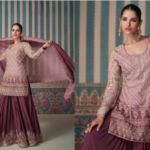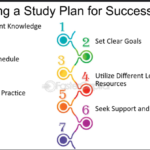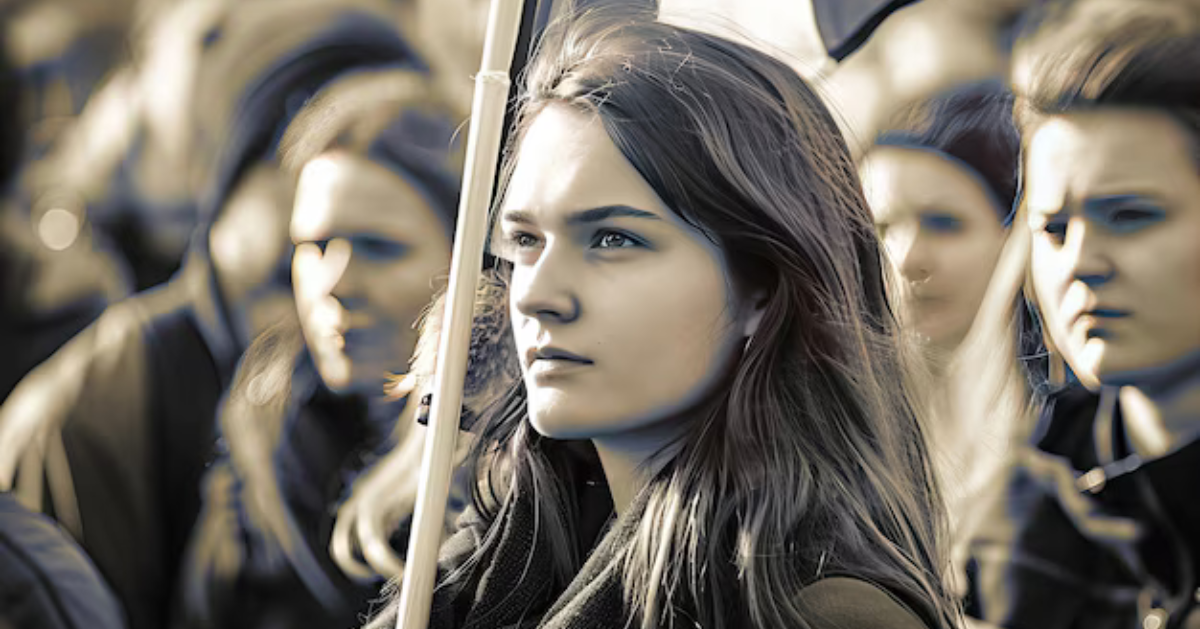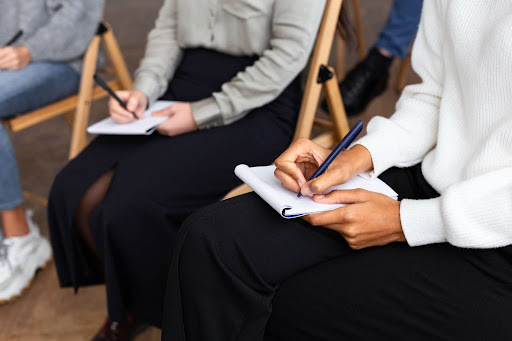Where in Northern California did you grow up?
I grew up on a ranch, in a valley surrounded by redwoods, on the outskirts of a town called Kings Mountain. Kings Mountain is about an hour south of San Francisco clustered around Highway 35, otherwise known as Skyline Blvd.
I grew up on a ranch, in a valley surrounded by redwoods, on the outskirts of a town called Kings Mountain. Kings Mountain is about an hour south of San Francisco clustered around Highway 35, otherwise known as Skyline Blvd.
How is this natural imagery significant to you? What do you remember?
Much of my work in the last few years has used the landscape of Broken Arrow Ranch, the place I grew up, as a vehicle to explore memory breakdown, fragmentation, and the significance of place. I think it is very interesting to take images apart and construct an environment that is familiar, but also strange because it is not a real place. The images I use in my work are photos I have taken of the landscape, and sky imagery from there and the larger Bay Area. When exploring the significance of a specific place, it is important to me that I use imagery and source material derived from that place.I grew up on the ranch and my family still lives there, so the memories are vast, so vast that they are often difficult to sift through. I suspect a lot of information has gotten lost, or won’t be retrievable until I’m struck with a feeling that conjures the memory back up. One thing that I always remember (and experience every time) is how I drive forever down this winding one lane road through the trees, only to have the trees clear, round a bend, and see the most breathtaking view of the valley and trees, and horizon. On a clear day the ocean is visible way out there, twinkling away. It’s breathtaking every time.For you, what is captivating about the connection of place and memory? What makes this an exciting subject to make work about?
Memory is interesting to me because although I remember a lot of things, my mind is not organized. I struggle to retrieve complete memories. My experience is that memories of places, people and things of emotional significance often come back in fits and starts, accompanied by a lot of feelings. I don’t think this is unique, but it is interesting to me. Everything I try to conjure feels fragmented, or filled in with what I believe happened, but I’m not actually sure. I think the dissolve of the original memory is interesting too. The more I try to remember something, the less confident I am about the accuracy of the details. For that reason the work I make emphasizes a fragmenting or break down of the compete image.
Much of my work in the last few years has used the landscape of Broken Arrow Ranch, the place I grew up, as a vehicle to explore memory breakdown, fragmentation, and the significance of place. I think it is very interesting to take images apart and construct an environment that is familiar, but also strange because it is not a real place. The images I use in my work are photos I have taken of the landscape, and sky imagery from there and the larger Bay Area. When exploring the significance of a specific place, it is important to me that I use imagery and source material derived from that place.I grew up on the ranch and my family still lives there, so the memories are vast, so vast that they are often difficult to sift through. I suspect a lot of information has gotten lost, or won’t be retrievable until I’m struck with a feeling that conjures the memory back up. One thing that I always remember (and experience every time) is how I drive forever down this winding one lane road through the trees, only to have the trees clear, round a bend, and see the most breathtaking view of the valley and trees, and horizon. On a clear day the ocean is visible way out there, twinkling away. It’s breathtaking every time.For you, what is captivating about the connection of place and memory? What makes this an exciting subject to make work about?
Memory is interesting to me because although I remember a lot of things, my mind is not organized. I struggle to retrieve complete memories. My experience is that memories of places, people and things of emotional significance often come back in fits and starts, accompanied by a lot of feelings. I don’t think this is unique, but it is interesting to me. Everything I try to conjure feels fragmented, or filled in with what I believe happened, but I’m not actually sure. I think the dissolve of the original memory is interesting too. The more I try to remember something, the less confident I am about the accuracy of the details. For that reason the work I make emphasizes a fragmenting or break down of the compete image.
I’m interested in place because many places in life are connected to big, complex feelings. If I lose access to a place that I love I experience grief with that loss. I have focused a lot on the ranch because I was raised there, and I have a lot of emotion tethered there. Many of my most defining experiences happened on that property, or with people that I easily associate with that property.
What is the significance of the base color (cream) in your quilts?
Those fabrics are two different weaves of linen canvas. I like to work with those colors and textures because they are earth tones and compliment nature imagery. I am especially drawn to linen fabrics I have the association of them being homey, domestic items which is conceptually relevant to the work.Why quilting? What about this material or mode of construction lends itself well to your art practice?
I started this body of work thinking about place and memory, and was interested in a method of addressing home and domesticity without being didactic or overtly sentimental in that expression. I was already working with fabrics, so it was not a huge leap to consider quilting. Quilting carries such a long history as a domestic practice that I found it to be the appropriate way to hint at these ideas without going overboard.
Those fabrics are two different weaves of linen canvas. I like to work with those colors and textures because they are earth tones and compliment nature imagery. I am especially drawn to linen fabrics I have the association of them being homey, domestic items which is conceptually relevant to the work.Why quilting? What about this material or mode of construction lends itself well to your art practice?
I started this body of work thinking about place and memory, and was interested in a method of addressing home and domesticity without being didactic or overtly sentimental in that expression. I was already working with fabrics, so it was not a huge leap to consider quilting. Quilting carries such a long history as a domestic practice that I found it to be the appropriate way to hint at these ideas without going overboard.
I’ve been perusing your website and I wasn’t able to locate a meaty artist statement. There was just one sentence under Biography that talked directly about your work. It says, “Amber Jean Young, a Northern California Native, utilizes landscape imagery to address place and memory in her art practice.”
From your one liner. I take away: The images that you have chosen to include in your pieces are fragmented. Like memory they are incomplete, wavering between remembered and forgotten. I’m sure there is so much more to this work and I am wondering about the choice of using hard lines to splice up organic imagery. The shapes removed and distorted are very geometric/non-organic. What is the significance of the diamond and straight edge?
I like the contrast between soft and organic nature imagery, and hard geometric forms and lines. The fragmentation of an image is more pronounced when the viewer can see how images used to fit together, but now are severed. By cutting pieces apart, whether or not it is a straight line, there is an implication that there is more to the image than what you are seeing, that part of the information has been lost or removed.
From your one liner. I take away: The images that you have chosen to include in your pieces are fragmented. Like memory they are incomplete, wavering between remembered and forgotten. I’m sure there is so much more to this work and I am wondering about the choice of using hard lines to splice up organic imagery. The shapes removed and distorted are very geometric/non-organic. What is the significance of the diamond and straight edge?
I like the contrast between soft and organic nature imagery, and hard geometric forms and lines. The fragmentation of an image is more pronounced when the viewer can see how images used to fit together, but now are severed. By cutting pieces apart, whether or not it is a straight line, there is an implication that there is more to the image than what you are seeing, that part of the information has been lost or removed.
I honed in on the diamond shape, because the diamond is a frequently used shape in quilting, and diamond patterns appear in some upholstery fabrics I’ve found interesting. Mostly, I wanted to find a motif that I can use in many designs and patterns as a consistent language across a body of work.
Two Apart \\ 2015 \\ Linen canvas, thread, batting, muslin Odd sized quilt \\ 1:14.75”x14”, Odd sized quilt 2: 14.75x 10.5 \\ arrangement variable
” I decided to push into sculpture territory again when I realized I could make three-dimensional objects by using the natural behavior of fabric (folds, wrinkles, etc), and the three layers of material required to make a quilt. It seemed like a natural progression for me to make organic shapes when working with landscape imagery.”
Were you always working in fibrous materials? if not, How and when did you move into this medium?
I have always made art, but I didn’t start with textiles. My parents encouraged and fostered my interest in the arts so I was always enrolled in art classes learning something. I began studying oil painting in college and continued oil painting until 2009, part way through the first year of graduate school at San Francisco Art Institute. It was then that I began making mixed media sculptures and wall work utilizing fabrics and fibers. I started making quilts in 2013.What are the different techniques you use?
I use a number of quilting and sewing techniques, but there is a quilting technique called paper piecing that I really like, and have been using to make my most recent works. Paper piecing is great for executing more complicated designs because I can transfer the design onto paper and use the paper as a template to make sure the lines are very precise.I love the movement from the quilts as wall pieces to them transformed into sculptures. What was the motivation or catalyst that brought you here?
I am very interested in objects and “thingness”. I love quilts because they are objects that live in your home with you, but because they are flat they can also be displayed on the wall. I decided to push into sculpture territory again when I realized I could make three-dimensional objects by using the natural behavior of fabric (folds, wrinkles, etc), and the three layers of material required to make a quilt. It seemed like a natural progression for me to make organic shapes when working with landscape imagery.Where is your work headed next? Do you have any new directions that are exciting you or any new challenges you’re taking on?
I’m excited about the direction my work is heading in. The newest work is more abstract and focuses less on memory and a specific place, and more on deconstructing images in order to rebuild a new place. I’ve been using a lot of sky imagery, which is why the landscape is so much less specific. The new work is otherworldly and optimistic, but still very inspired by Northern California.
I have always made art, but I didn’t start with textiles. My parents encouraged and fostered my interest in the arts so I was always enrolled in art classes learning something. I began studying oil painting in college and continued oil painting until 2009, part way through the first year of graduate school at San Francisco Art Institute. It was then that I began making mixed media sculptures and wall work utilizing fabrics and fibers. I started making quilts in 2013.What are the different techniques you use?
I use a number of quilting and sewing techniques, but there is a quilting technique called paper piecing that I really like, and have been using to make my most recent works. Paper piecing is great for executing more complicated designs because I can transfer the design onto paper and use the paper as a template to make sure the lines are very precise.I love the movement from the quilts as wall pieces to them transformed into sculptures. What was the motivation or catalyst that brought you here?
I am very interested in objects and “thingness”. I love quilts because they are objects that live in your home with you, but because they are flat they can also be displayed on the wall. I decided to push into sculpture territory again when I realized I could make three-dimensional objects by using the natural behavior of fabric (folds, wrinkles, etc), and the three layers of material required to make a quilt. It seemed like a natural progression for me to make organic shapes when working with landscape imagery.Where is your work headed next? Do you have any new directions that are exciting you or any new challenges you’re taking on?
I’m excited about the direction my work is heading in. The newest work is more abstract and focuses less on memory and a specific place, and more on deconstructing images in order to rebuild a new place. I’ve been using a lot of sky imagery, which is why the landscape is so much less specific. The new work is otherworldly and optimistic, but still very inspired by Northern California.
I’m also excited to say that I have delved into my first social practice project called Community Quilt. Community Quilt calls on community participation and the long history of quilting bees to bring people together to work on a quilt, even people who have no sewing experience. Community Quilt participants use provided fabric and a block template to design their own quilt block without the traditional restrictions of a pattern. Working without a pattern allows participants the freedom to explore their own creative voice. After a participant has designed their block, I sew together the design, and complete the day’s quilt after the fact. We had the first installment of Community Quilt in September and the next one will be in December.










